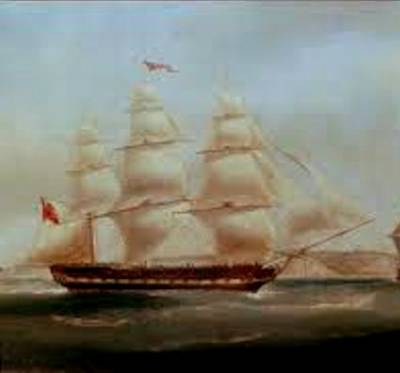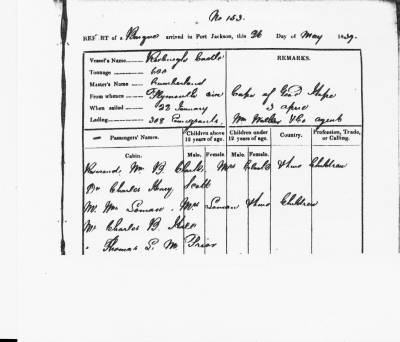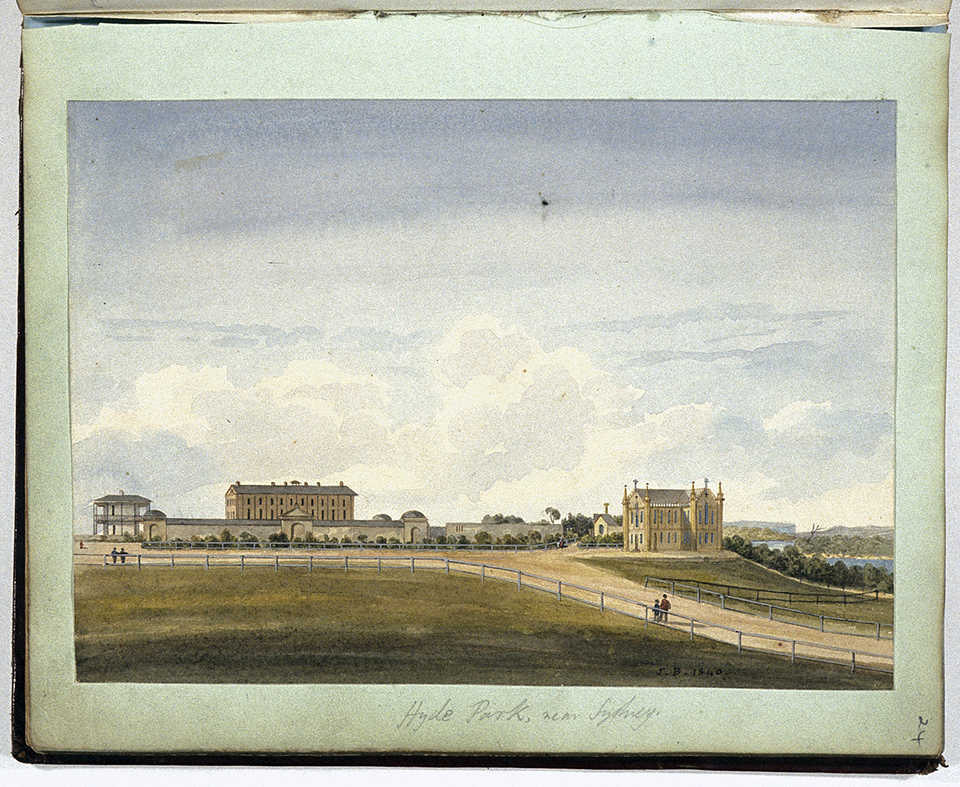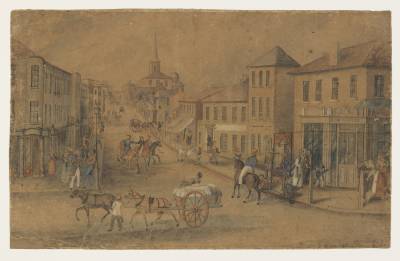Table of Contents
TLM-P: initial decades in Australia
TLM-P was only just 19 years old when, on 29 December 1838, he boarded a ship for Australia. His memoir of his trip is descriptive but not introspective: there is nothing on why or on why Australia - nor on how he spent that last Christmas with his family, just four days before he sailed. His ship was the Roxburgh Castle (pictured) which he described as 'an old Indiaman [cargo ship used by the East India Company] of some 600 tons'.
 1)
1) 
Remarkably, we have two first-hand passenger accounts of the voyage - one by TLM-P and other by the Rev. W Clarke.2)
The voyage got off to a bad start as the weather in the channel was so bad that, after a fortnight, the ship made an unscheduled stop at Portsmouth. Clarke stated that the bad weather was caused by one of the worst hurricanes on record to hit England.3) TLM-P claimed he had had bad voyages while in the navy without ever being seasick, but this short trip was the one he vividly recalled some 40 years later, as 'misery'.4) The upside was that his family lived nearby so, quite unexpectedly, he was able to see them again. The Roxburgh Castle finally called into Plymouth to collect more passengers then left England on 22 January 1839.
Sailing to Australia was a perilous undertaking due to the danger of shipwreck (the Roxburgh Castle was lost at sea two years later) and disease. Both dangers were very real on TLM-P's voyage. As the ship was nearing the entry to Bass Strait, he and other men were asked to stay dressed as the captain was not sure of his location. The many memorials to shipwrecks around King Island indicate that it was a common problem. Disease was also a real threat, with 10 children and 5 adults dying on the voyage. TLM-P believed they died of typhoid fever though the medical officer, in deciding against the need for quarantine when they arrived in Sydney, indicated that he believed it was not typhoid or any other infectious disease. Voyages to Australia were also lengthy: it was over five months before the Roxburgh Castle entered the heads of Sydney Harbour on 26 May 1839.5)
For more on this voyage, click 'Roxburgh Castle' memoir.
What if?
What if TLM-P had delayed his trip, emigrating to Sydney nine months later? Then he may have sailed on The Alfred and met an adventurous 21 year old named Emily Darvall and her family. She came from a similar background and her family emigrated with the intention of making a quick fortune and returning home in a few years. Would she and TLM-P have married if they shared the passage out? For in 1840, Emily married a fellow passenger, Robert Barton. He had a similar background to TLM-P: an ex-sailor (with the East India Company) whose family had been Anglo-Irish, with strong European connections (like the Darvalls, his family lived in France) and an ambition to run his own property in rural Australia.6) As it turned out, Emily Darvall would never have a romantic connection to TLM-P; instead, when he married for a second time, she become his mother-in-law.
Sydney in 1839, 1840
The colony of NSW, when TLM-P arrived in 1839, was still a tiny settlement of less than 120,000 white inhabitants and an unknown number of Aboriginal people surviving despite introduced diseases and the violent takeover of their country. TLM-P's fellow passenger, the Rev. W. Clarke, recorded his initial impressions: that Sydney only had 'two or three good streets, the rest resembling back slums'; food was dear and water sold by the pail; residents had good, cheap furniture made from local cedar; the women had sallow, unhealthy looking complexions; and it was a surprising literate place for a convict colony, with 7 printing offices producing 14 papers.7)
Governor Macquarie had planned on a grand scale with roads, civic buildings and an impressive Government House for himself. The next two illustrations, of the area around Hyde Park, and Government House, are both from 1840.

 .
.
It was only in 1842, around the time George Roberts drew this following sketch of King Street, that Sydney was declared a city.
 Courtesy Mitchell Library, SLNSW
Courtesy Mitchell Library, SLNSW
Transportation would soon cease in the eastern states, but had left its mark. Many families would, for generations, hide what was called the criminal stain. Thanks to propagandists like William Charles Wentworth and the introduction of assisted migration, TLM-P was far from the only free migrant to arrive in NSW in 1839: there were 10,549 of them, plus 2,314 convicts. In total, there were 76,351 free settlers, 38,035 convicts and an unknown number of Aboriginal survivors.8)